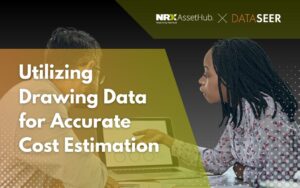In asset-intensive industries, data is the new oil—but only if it is clean, trusted, validated, and properly governed. Whether you are using IBM Maximo, Oracle EAM, or HxGN EAM, the accuracy of asset data is what drives the effectiveness of your EAM and CMMS strategies. Without trust and proper validation of your asset data, decisions begin to stall, productivity suffers, and risks start to increase. According to a survey conducted by Reliabilityweb.com, trust in asset data hovers around just 60% on average—a clear signal that there’s work to do across the board.

Why Trust Matters
Your organization relies on accurate data to make critical decisions about preventive maintenance, FLOCs, asset health, inventory, and budgeting. When that data is missing, duplicated, or outdated, it leads to:
- Delayed maintenance activities
- Increased downtime
- Inaccurate cost reporting
- Regulatory compliance risks
In fact, 21.8% of organizations surveyed cited slower decision-making as the most severe consequence of lacking trusted data, followed by higher total cost of ownership (16.36%).
The Root Causes of Distrust
So, why do so many EAM and CMMS systems become data graveyards?
- Siloed Systems: Many organizations use a mix of platforms—SCADA, IoT, Excel, ERP, etc.—without integrated data governance, making a single source of truth elusive.
- Lack of Governance Roles: Asset data often falls under multiple departments (maintenance, engineering, IT), and without clear ownership, accountability slips.
- Outdated or Incomplete Data: Migration from legacy systems is frequently rushed or under-resourced, resulting in poor data quality in modern platforms such as SAP Plant Maintenance or IFS.

Proven Strategies to Build Trust in Your Asset Data
Establish a Data Governance Framework
Data governance isn’t just a policy—it’s a cultural shift. Organizations should define:
- Data ownership and stewardship roles
- Business rules for asset naming, classification, and structure
- Quality checkpoints throughout the asset lifecycle—from procurement to decommissioning
As part of the Uptime® Elements Framework, this approach ensures data is managed with integrity, responsibility, and consistency.
Conduct Periodic Data Audits and Validation
Validation isn’t a one-time event during migration—it’s an ongoing process. Regular audits help detect:
- Inactive or orphaned FLOCs
- PMs missing key data (i.e., task lists or priority codes)
- Inconsistent formatting in descriptions
Leading organizations use AI-powered analytics platforms, such as those integrated with IFS, to run real-time validations and trend monitoring.
Empower Cross-Functional Teams
Responsibility for data shouldn’t rest solely with IT or maintenance. Engage cross-functional teams—operations, engineering, digitalization leads—to define workflows and identify gaps. Reliabilityweb.com found that 26% of organizations place primary responsibility for asset data with CMMS/EAM administrators, but effective governance requires more collaboration across departments.
Industry Example: Utilities Sector
Chevron, a global leader in energy, undertook a major migration to Maximo to streamline operations across its upstream and downstream assets. To overcome the issues faced during their transition, Chevron implemented a robust data governance framework and deployed AI-based validation tools to cleanse and standardize their maintenance data. Within the first period of time post-migration, the company reported an improvement in data trustworthiness, and a reduction in reactive maintenance work orders—which ultimately allowed their teams to shift focus toward predictive and reliability-centered maintenance strategies.
Turning Insight into Action
Building trust in your asset data isn’t a “set it and forget it” initiative. It’s an evolving journey—especially in today’s digital-first, IIoT-enabled landscape. However, with the right governance strategy, validation tools, and cross-functional alignment, your CMMS or EAM system becomes more than just a data repository—it becomes your greatest asset.
Utilizing Drawing Data for Accurate Cost Estimation

The Challenges of Table Data Extraction

The Tedious Nature of Creating Piping Lists Manually

Share this article

